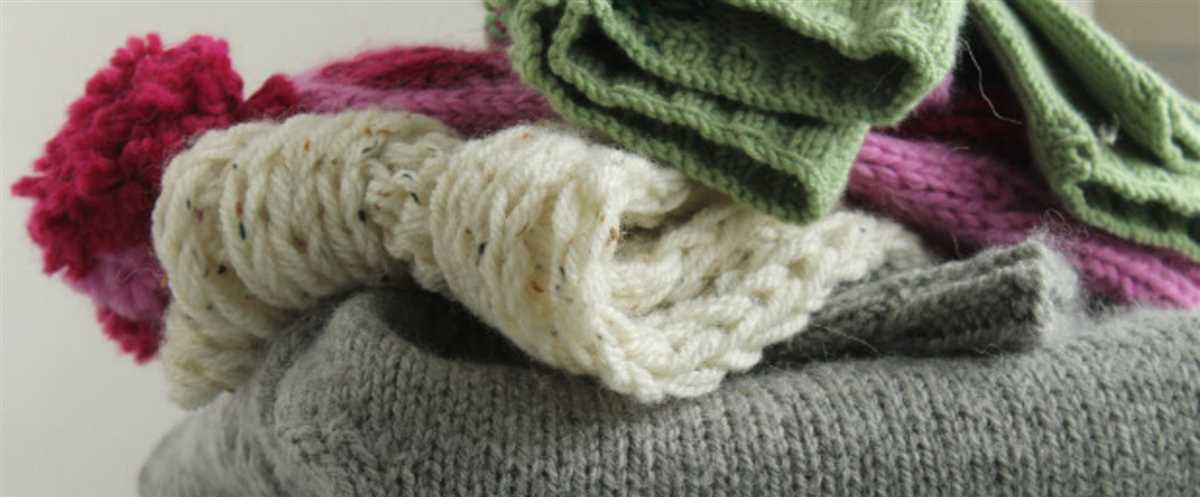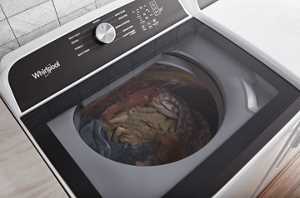




When it comes to hand-knitted items, proper care and maintenance are essential to preserve their quality and longevity. Washing hand-knitted items can be a delicate task, as using the wrong techniques or products can damage the delicate fibers or cause the item to lose its shape. To help you keep your hand-knitted items looking their best, we have gathered expert advice on the best practices for washing them.
1. Read the Care Instructions: Before washing any hand-knitted item, it is crucial to read and follow the care instructions provided by the manufacturer or creator. Pay attention to the recommended water temperature, type of detergent, and any specific instructions for drying or reshaping the item.
2. Hand-Wash with Gentle Detergent: Hand-knitted items are best washed by hand instead of being placed in a washing machine. Use a gentle detergent specifically designed for delicate fabrics. Avoid using harsh chemicals or bleaches that can damage the fibers and cause colors to fade.
3. Gently Squeeze and Rinse: When washing the hand-knitted item, avoid scrubbing or wringing it out, as this can stretch the fibers and cause damage. Instead, gently squeeze the item to remove excess water, and then rinse it thoroughly with clean water.
4. Reshape and Dry Flat: After rinsing, carefully reshape the hand-knitted item to its original shape, paying special attention to areas that may have stretched or lost their form. Lay the item flat on a clean towel or drying rack to dry. Avoid hanging the item, as this can cause it to stretch or lose its shape.
“Proper care and maintenance play a vital role in preserving the quality and lifespan of hand-knitted items. By following these best practices, you can ensure that your cherished hand-knitted pieces stay beautiful and continue to bring warmth and joy for years to come.”
Expert Advice on Washing Hand-Knitted Items
Hand-knitted items require special care when it comes to washing them. Here are some expert tips to ensure that your hand-knitted items remain in good condition:
1. Read the Care Instructions
Before washing your hand-knitted item, always check the care instructions provided by the yarn manufacturer or the creator. Different types of yarns may require different washing methods.
2. Hand-Wash or Machine Wash?
In most cases, it is recommended to hand-wash hand-knitted items to prevent them from becoming misshapen or damaged. However, some knitted items may be machine washable, especially if they are made from a durable yarn. Again, always check the care instructions to determine the suitable washing method.
3. Use a Mild Detergent
When hand-washing your hand-knitted items, use a mild detergent that is specifically designed for delicate fabrics. Avoid using harsh detergents or bleach as they can damage the fibers and colors of the knitted item.
4. Soak and Gently Agitate
Fill a basin or sink with lukewarm water and add the mild detergent. Place the hand-knitted item in the water and gently agitate it to remove any dirt or residue. Avoid wringing or rubbing the knitted item as it can cause it to lose its shape.
5. Rinse Carefully
Rinse the hand-knitted item thoroughly with lukewarm water until all the detergent is removed. Be gentle while rinsing to avoid stretching or damaging the item.
6. Press, Don’t Wring

When removing excess water from the hand-knitted item, avoid wringing it as it can distort the shape. Instead, gently press the item against the side of the sink or basin to squeeze out the water.
7. Dry Flat
After washing, reshape the hand-knitted item to its original shape and lay it flat on a clean towel or drying rack. Avoid hanging it to dry as it can cause the item to stretch or lose its shape.
8. Avoid Direct Sunlight and Heat
When drying the hand-knitted item, keep it away from direct sunlight or heat sources like radiators or heaters. Excessive heat can cause the fibers to become brittle or shrink.
9. Store Properly
Once the hand-knitted item is completely dry, store it in a cool, dry place, preferably folded and wrapped in tissue paper to prevent any dust or damage.
By following these expert tips, you can keep your hand-knitted items in excellent condition and enjoy their warmth and beauty for years to come.
Importance of Hand-Knitted Item Maintenance
Maintaining hand-knitted items properly is essential to ensure their longevity and to keep them looking their best. Here are some reasons why regular maintenance is important:
- Preserving the quality: Hand-knitted items require special care to maintain their softness, shape, and durability. Regular maintenance helps prevent damage, such as stretching or pilling, which can occur with improper handling or washing.
- Protecting the investment: Hand-knitted items are often made with high-quality materials and require significant time and effort to create. By properly maintaining these items, you can protect your investment and ensure that they can be enjoyed for years to come.
- Keeping them clean and fresh: Regular maintenance, including washing and storing hand-knitted items correctly, helps keep them clean and fresh. This is particularly important if the items are exposed to dirt, sweat, or other substances that can cause odours or stains.
- Avoiding damage: Hand-knitted items are delicate and can be easily damaged if not handled with care. Regular maintenance allows you to inspect the items for any signs of wear or damage, such as loose threads or holes, and take necessary actions to repair them before they worsen.
Here are some best practices to follow for maintaining hand-knitted items:
- Washing: Follow the specific washing instructions provided by the knitter or on the yarn label. Hand-washing is usually recommended to prevent damage, but some items may be machine washable on a gentle cycle.
- Drying: After washing, reshape the item and lay it flat to dry on a clean towel. Avoid hanging or wringing the item, as this can cause stretching or distortion.
- Storage: Fold hand-knitted items neatly and store them in a clean, dry place, away from direct sunlight or moisture. Consider using moth repellents or placing them in sealable bags to protect against insects.
- Regular inspection: Periodically check hand-knitted items for any signs of damage or wear. Pay attention to areas that may be more prone to friction, such as cuffs or collars, and reinforce them if needed.
By following these maintenance practices, you can keep hand-knitted items in excellent condition and enjoy their warmth and beauty for years to come.
Choosing the Right Cleaning Products
When it comes to cleaning your hand-knitted items, it’s important to choose the right cleaning products. The wrong ones can damage or ruin your precious creations. Here are some tips to help you select the best cleaning products for your hand-knitted items:
- Mild Detergent: Look for a mild detergent that is specifically formulated for delicate fabrics. Avoid using harsh detergents or bleaches, as they can weaken the fibers of your hand-knitted items.
- Wool Wash: If your hand-knitted items are made from wool, consider using a wool wash product. Wool wash is specially designed to clean and protect wool fibers, and it helps maintain the softness and integrity of your knitted items.
- pH Neutral: Opt for cleaning products that are pH neutral. pH neutral products are gentle on fibers and help prevent color fading or bleeding. They are suitable for a wide range of hand-knitted items, including those made from silk, cotton, or synthetic yarns.
- Stain Remover: In case your hand-knitted items have stubborn stains, it’s a good idea to have a stain remover specifically formulated for delicate fabrics. Remember to spot test it on a small, inconspicuous area of the item before applying it to the stain.
- Fabric Softener: While fabric softeners can make your hand-knitted items feel softer, they can also leave a residue that interferes with the breathability of the fibers. Consider using a minimal amount of fabric softener or skip it altogether.
Always follow the instructions provided by the manufacturer when using cleaning products. If you’re unsure about a specific product, consult the care instructions for your hand-knitted item or seek advice from a professional.
Proper Techniques for Hand-Washing

Hand-washing is the preferred method for cleaning delicate and precious hand-knitted items. To ensure the longevity and quality of your knitted creations, it is important to follow proper techniques for hand-washing. Here are some steps to help you achieve the best results:
- Prepare the wash basin: Fill a clean basin or sink with cool or lukewarm water.
- Add suitable detergent: Use a gentle, pH-neutral detergent specifically designed for delicate garments. Avoid using harsh chemicals or bleach.
- Submerge the item: Gently place the hand-knitted item into the water, making sure it is fully submerged.
- Soak the item: Allow the item to soak in the soapy water for about 10 to 15 minutes. This will help loosen any dirt or residue.
- Gently agitate: Use your hands to gently agitate the water around the item, making sure to distribute the detergent evenly.
- Rinse thoroughly: Drain the soapy water and refill the basin with clean water. Rinse the item by gently squeezing and swishing it in the water until all the detergent is removed.
- Remove excess water: After rinsing, gently press the item against the side of the basin to remove excess water. Do not wring or twist the item, as this can damage the fibers.
- Press out remaining water: Lay the item flat on a clean, absorbent towel. Roll the towel up with the item inside and press gently to remove additional moisture.
- Reshape and dry: Lay the item flat on a dry towel or blocking mat in its desired shape. Reshape the item if necessary, gently stretching it back to its original dimensions. Allow it to air dry away from direct sunlight or heat sources.
Following these proper hand-washing techniques will help maintain the integrity and beauty of your hand-knitted items for years to come. Remember to always read and follow the care instructions provided by the yarn manufacturer or pattern designer for best results.
Tips for Drying and Storing Hand-Knitted Items
Drying and storing hand-knitted items properly is just as important as washing them. Follow these tips to ensure your knits stay in great condition for years to come.
1. Gently Squeeze Out Excess Water

After washing your hand-knitted item, avoid wringing or twisting it as this can stretch or distort the shape. Instead, gently squeeze out excess water by placing the item between two towels and pressing down.
2. Reshape and Lay Flat to Dry
Reshape your hand-knitted item while it is still damp to ensure it retains its original shape. Lay it flat on a clean, dry towel or blocking mat, gently smoothing out any wrinkles or bumps.
Avoid hanging or using a clothes dryer as this can cause stretching or misshaping of the knitted fabric.
3. Use a Mesh Drying Rack

If you prefer, you can use a mesh drying rack instead of laying your hand-knitted item flat. This allows air to circulate around the entire garment, helping it dry evenly.
Place the rack on a clean, dry surface and lay your item flat on top. Make sure the item is spread out evenly and not bunched up.
4. Keep Away from Direct Sunlight
When drying your hand-knitted items, avoid placing them in direct sunlight. Sun rays can bleach or fade the colors, especially for items made with natural fibers like wool or cotton.
Find a shaded, well-ventilated spot for drying to maintain the color vibrancy of your knits.
5. Store in a Clean, Dry Place
Once your hand-knitted items are completely dry, store them in a clean, dry place to prevent damage from moisture and pests.
Avoid folding or packing the items too tightly as this can create creases or compress the fabric. Instead, loosely roll or fold them and place them in a breathable fabric bag or drawer.
6. Use Mothballs or Cedar Blocks
To protect your hand-knitted items from moth damage, you can use mothballs or cedar blocks. These help repel moths and keep your knits safe from holes and tears.
Place the mothballs or cedar blocks near your stored knits, but make sure they do not come into direct contact with the items as they can cause staining or odor transfer.
By following these tips, you can ensure your hand-knitted items stay clean, fresh, and in great condition for years to come.
Common Mistakes to Avoid
When washing hand-knitted items, it’s important to take certain precautions to avoid damaging the delicate fabric. Here are some common mistakes to avoid:
- Using hot water: Hot water can cause wool and other natural fibers to shrink or lose their shape. Always use lukewarm or cold water when washing hand-knitted items.
- Using harsh detergents: Harsh detergents can strip the natural oils from the fibers and leave them dull and brittle. Instead, use a gentle wool wash or mild shampoo specifically designed for delicate fabrics.
- Agitating the fabric: Aggressive rubbing or wringing can cause the fabric to stretch or distort. Instead, gently squeeze the excess water out and avoid twisting or pulling on the fabric.
- Not properly supporting the item: When washing, make sure to support the weight of the item to prevent stretching. Avoid hanging knitted items to dry as the weight of the wet fabric can cause it to stretch.
- Skipping the blocking step: Blocking is an important step in washing hand-knitted items as it helps to reshape them to their original dimensions. Take the time to properly block the item after washing and allow it to dry flat.
- Ignoring the care instructions: Different fibers require different care methods. Always read and follow the care instructions provided by the yarn manufacturer or included with the item.
- Not testing for color bleeding: Some hand-dyed yarns may bleed color when washed. Before washing, test a small inconspicuous area of the item to ensure that the colors do not bleed or run.
Avoiding these common mistakes can help ensure that your hand-knitted items stay beautiful and last for many years to come. Taking the time to properly care for them will help maintain their shape, softness, and overall quality.
FAQ
What is the best way to wash a hand-knitted sweater?
The best way to wash a hand-knitted sweater is to fill a sink or basin with lukewarm water and a gentle wool wash detergent. Gently agitate the sweater in the water, being careful not to stretch or twist the fabric. Rinse the sweater thoroughly in cool water, gently squeeze out the excess water, and lay it flat to dry.
Can I machine wash my hand-knitted scarf?
It is generally not recommended to machine wash hand-knitted items, as the agitation and spinning of the machine can cause the item to stretch or become misshapen. It is best to hand wash your hand-knitted scarf to ensure its longevity and maintain its shape.
Can I use regular laundry detergent to wash my hand-knitted hat?
No, regular laundry detergent is too harsh for delicate hand-knitted items. It is best to use a gentle wool wash detergent specifically designed for washing wool and other delicate fabrics. This will help to preserve the quality and integrity of the hand-knitted hat.
How often should I wash my hand-knitted socks?
The frequency of washing hand-knitted socks depends on how often you wear them and your personal preference. However, it is generally recommended to wash them every 4-6 wears to keep them clean and fresh. Always follow the washing instructions provided for the specific yarn used to knit the socks.
Can I dry my hand-knitted shawl in the dryer?
No, it is not recommended to dry hand-knitted items in the dryer. The heat and tumbling action of the dryer can cause the item to shrink, stretch, or become misshapen. It is best to lay the hand-knitted shawl flat on a clean towel and allow it to air dry naturally.
How often should I wash my hand-knitted items?
You should wash your hand-knitted items as often as they become dirty or smelly. It’s best not to wash them too frequently to avoid unnecessary wear and tear.
Can I machine-wash my hand-knitted items?
No, it’s generally not recommended to machine-wash hand-knitted items. The agitation and spinning in the machine can cause the delicate fibers to stretch, shrink, or become misshapen. Hand-washing is the preferred method to ensure their longevity.











